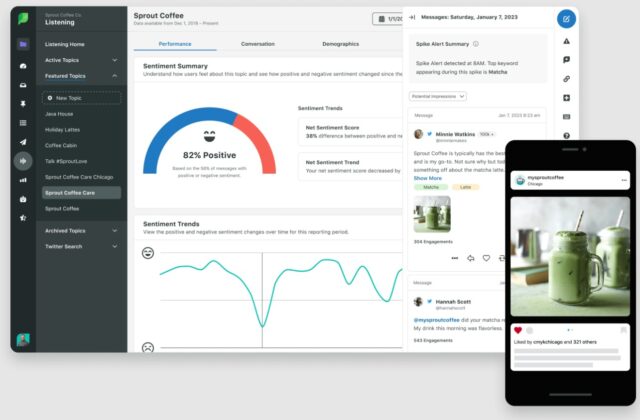
Using the best digital tools can give you a major advantage as a small business.
In 2024, countless online tools and apps are available on the market. You need to handpick the best ones — and this guide is here to help you.
Sit back, relax, and prepare to discover the top 8 digital tools for small businesses today.
1. HR Software

Let’s start with a good one: HR software.
One of the hardest parts of running a business is HR (Human Resources). There’s a lot to handle, from employee hiring to training, which is why many businesses often fall short when it comes to the HR side of things.
Thankfully, software for HR can help your business. Essentially, this takes all the nuts and bolts of HR and puts them in an online format. Through your HR software, you can take control of HR tasks much better than before, such as payroll management. You can also automate specific tasks, such as sending out job letters, to make your life even easier.
According to Business Wire, HR software is one of the most popular digital tools used by businesses today. As of right now, a huge 46% of companies use HR software, and this figure is going to keep growing moving into the future. By the end of the decade, almost all companies will likely use it, which is why you should join the trend now and stay ahead of the game.
2. Google Analytics
You have a business website, right? If the answer is yes, it’s highly recommended that you take advantage of Google Analytics.
Through Google Analytics, you can:
- Track your website traffic
- Gain a better understanding of your customers
- Make smart improvements to your online advertising
There are many other benefits, too, but there’s not enough time to discuss them all.
Best of all, Google Analytics is free. Yep, it’s free. What this means is that you can start to get an excellent ROI regarding your marketing and take your website traffic to the next level. There’s nothing to lose here, which is why Google Analytics is a must-have digital tool.
3. Salesforce
By now, most business professionals know what Salesforce is. If you don’t, here’s a quick explanation:
Through Salesforce, you can keep track of your customer relations, look at your sales data, and manage all of your existing leads.
The only downside to this is that Salesforce isn’t available for free. You have to pay a monthly fee per user, but the benefits far outweigh the costs. This is why over 150,000 businesses currently use Salesforce.
4. Microsoft Teams
Ever since the remote work era started in 2020, millions of employees have been working from home full-time or part-time. Naturally, this means that employees can’t communicate with their colleagues and managers face-to-face like they normally would in the office. Luckily, the solution known as Microsoft Teams has stepped in to ensure this isn’t a problem.
Through Microsoft Teams, employees worldwide can take part in regular video meetings through their business devices, such as laptops and smartphones. This is great for companies who want to maintain a strong company culture, as they can ultimately still have productive conferences and meetings. The only catch is that it’s via video — not in-person.
For example, let’s say you have a handful of employees working from home. Every day (or a few times a week), you can use Microsoft Teams to fire over some quick video call invites to your employees so that you can talk with each other. No matter the topic of conversation, whether it’s business targets or general updates, Microsoft Teams will allow you to talk with each other like you’re in the same room. It’s great!
5. Google Meet

If you and your workforce find that Microsoft Teams isn’t right for you, try Google Meet instead. Just like Microsoft Teams, Google Meet allows you to hold virtual meetings and conferences for free. You’ll be good to go if everyone has a Google account.
However, it’s worth mentioning that meetings are capped at 60 minutes per day with the free version of Google Meet. You’ll need to subscribe if you want to use this platform for longer.
6. Grammarly
Grammarly is an excellent digital tool for businesses to use. This is especially true for businesses with employees that type a lot (e.g., sending emails and writing marketing content).
So, what is Grammarly? It’s a smart piece of software that reviews spelling, improves grammar, and makes text more readable. As a result, your employees can produce better-written content that makes a positive impression on customers and clients.
Let’s say that you like to send regular marketing emails to your customers. Rather than simply typing them up and hitting send, use Grammarly to check all of the emails. This way, you can identify potential problems and make some smart improvements to the marketing emails. Remember, the better the email is written, the more likely customers are to engage with it.
7. Sprout Social

Sprout Social is one of the most popular social media management tools used by businesses today.
From Facebook to Twitter, this particular tool enables you to create posts tailored to each social media platform. On top of this, you can discover optimal post times, optimize brand keywords, and much more.
The message is clear: if you’re a business that’s passionate about social media, Sprout Social is the digital tool for you!
8. WhatsApp Business
WhatsApp Business is exactly what it says on the tin: it’s WhatsApp for businesses!
Through WhatsApp Business, you can provide customer service directly to the people who need it. This is a modern and efficient alternative to providing customer service via email, telephone, and other dated methods.
You get a total of 1,000 free customer conversations per month with WhatsApp Business. Any after that you’ll be charged for. However, if you’re a small business with a low customer count, you won’t need to worry about going over 1,000 conversations. Even if you do, the cost is pretty low, which is why WhatsApp Business is so popular.







